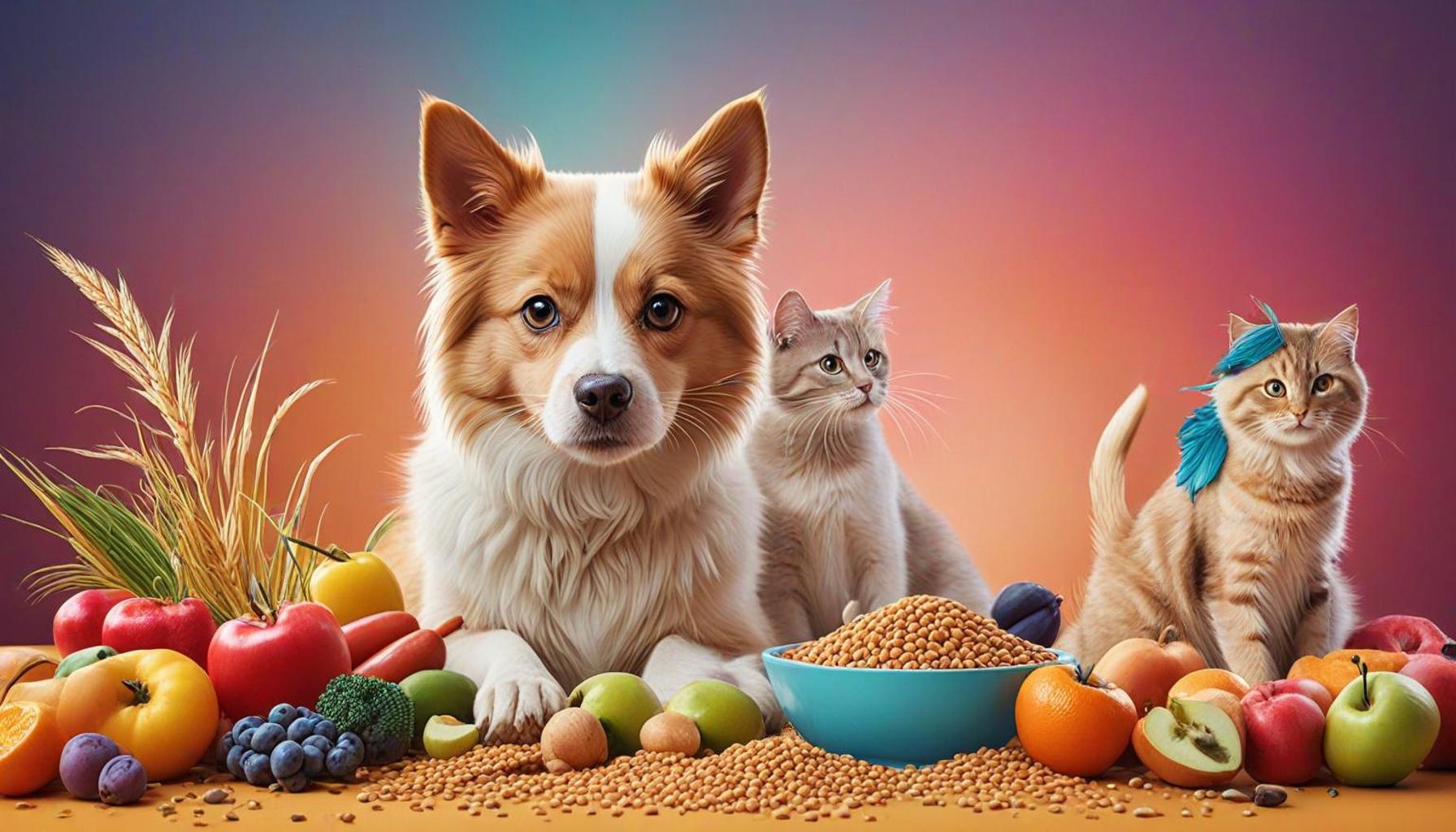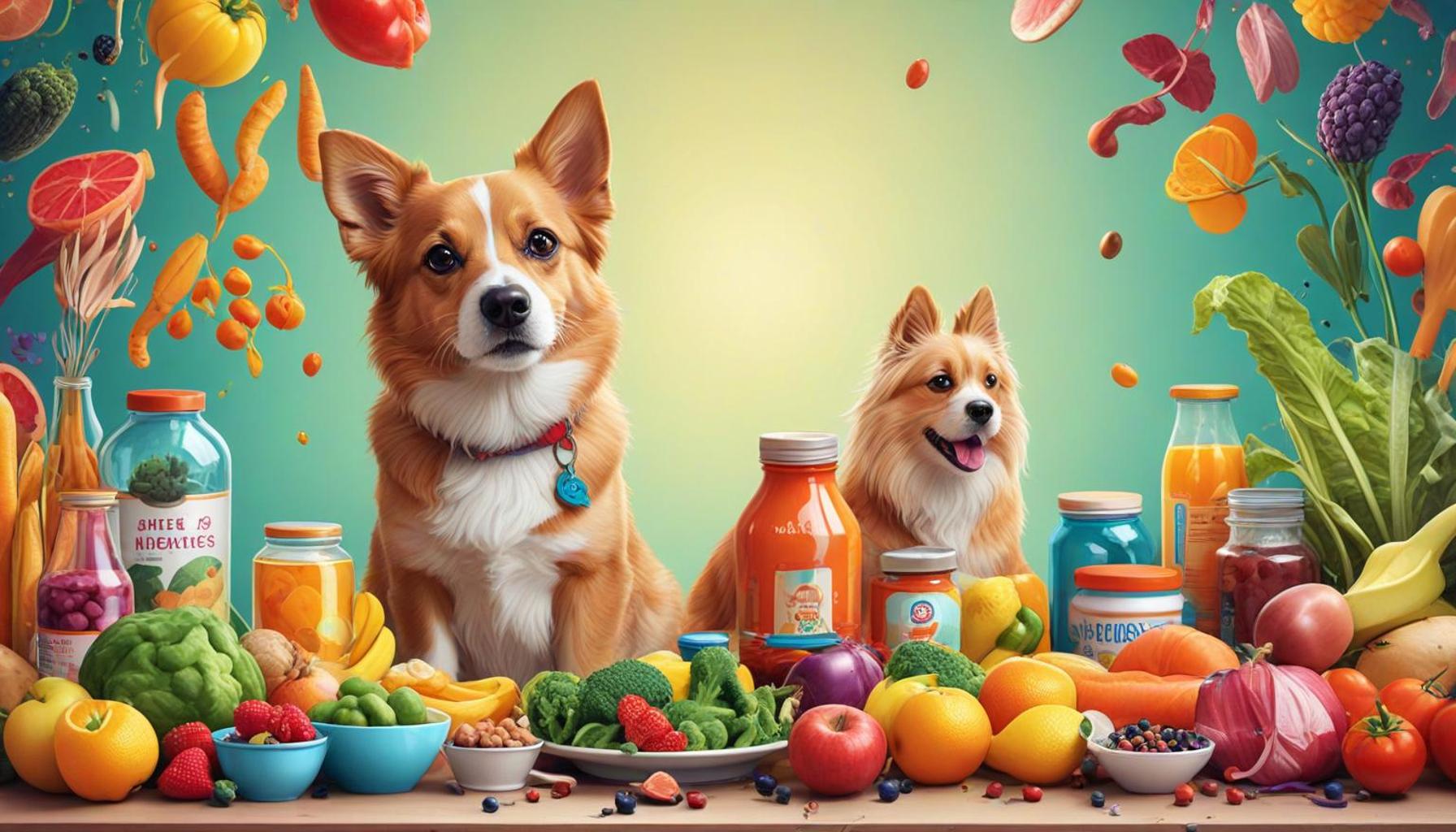The Effectiveness of Grain-Free Diets for Dogs and Cats: Myths and Truths

The Rising Interest in Grain-Free Diets for Pets
The trend towards grain-free diets for pets reflects broader changes in human diets and greater awareness of health and nutrition. As pet owners become more cognizant of what they feed their furry companions, many are turning to grain-free options in their pursuit of better health outcomes for their pets. This shift can be attributed to a number of factors including the rising incidence of allergies and obesity in pets, which has led owners to explore alternatives to traditional grain-based pet foods.
One common claim is that a grain-free diet results in improved digestion. Many pet owners report that their dogs and cats exhibit better bowel movements and less gastrointestinal discomfort when grains are eliminated from their diets. This is particularly relevant in a country like Nigeria, where digestive health can significantly impact a pet’s energy levels and overall well-being. For instance, ingredients like sweet potatoes and peas are often used in grain-free formulas, which can be more easily digested by some pets.
Another widely held belief is that grain-free foods provide allergy relief. Some pets may have sensitivities to certain grains, leading to issues such as skin irritations or gastrointestinal distress. Removing grains from their diet might reduce these symptoms and improve their quality of life. This has been particularly noted among pets in urban areas of Nigeria, where exposure to allergens may be heightened.
Weight management is yet another benefit often associated with grain-free diets. Many believe that these diets can help pets maintain a healthy weight because they tend to be higher in protein and lower in carbohydrates compared to traditional diets. For example, pet owners who feed their dogs high-protein diets derived from sources like meat and fish have reported better weight control, which plays a critical role in the overall health of their animals.
Despite these appealing claims, it’s important to approach grain-free diets with caution. Not every pet will benefit from excluding grains; in fact, some may experience health risks, such as potential nutritional deficiencies or heart issues, particularly dilated cardiomyopathy (DCM), which has been linked to certain grain-free diets. Moreover, the focus on grain-free products has led to concerns over the adequacy and safety of alternative ingredients used in these formulations.

This article sets out to dissect the myths and truths surrounding grain-free diets for pets. By consulting scientific studies and expert opinions, we aim to equip pet owners with the knowledge necessary to make informed decisions about their pets’ dietary needs. Through exploration and awareness, making the right choice for our four-legged friends can become less complex and more beneficial.
YOU MAY ALSO LIKE: Read read another article
Debunking the Myths: The Science Behind Grain-Free Diets
The claims surrounding grain-free diets often sound compelling, yet understanding the scientific evidence behind these assertions is essential for pet owners. One prevalent myth is that eliminating grains guarantees a healthier dog or cat. While grains like wheat, corn, and soy can trigger allergies in some pets, they are not inherently harmful to all animals. In fact, many grains are excellent sources of nutrition, providing essential fibers, proteins, and carbohydrates that can contribute to a balanced diet.
When addressing improved digestion, it is critical to consider the role of individual dietary needs. For example, while some pets may thrive on grain-free diets that feature ingredients like chickpeas or lentils, others may find these same formulas difficult to digest. The fiber present in certain grains can aid in digestion and promote regular bowel movements, something that could potentially be compromised by a shift to grain-free options. Understanding your pet’s individual needs through consultation with a veterinarian is crucial.
Another myth revolves around the belief that grain-free diets prevent allergies. Allergies in pets can be complex, and while some animals react poorly to specific proteins found in grains, others may be sensitive to meat or other ingredients commonly used in grain-free formulations. Identifying the root cause of an allergy requires careful observation and often, an elimination diet approach under professional guidance. Pet owners should not hastily conclude that removing grains will solve all allergy-related issues without proper evaluation.
Exploring the Nutritional Composition of Grain-Free Diets
Beyond the myth of allergies and digestive improvements, there lies the question of what grain-free diets contain instead of grains. While many grain-free foods boast high protein content, pet owners must pay close attention to the source of this protein and the overall nutritional balance of the diet. Generally, grain-free formulations replace grains with alternative carbohydrates and fillers such as:
- Potatoes
- Sweet potatoes
- Peas
- Chickpeas
- Fruits, such as blueberries and cranberries
While these ingredients can contribute to a pet’s energy levels, it is important to consider the long-term implications of feeding pets diets high in alternative carbohydrates without adequate grain intake. Studies have shown that certain grain-free diets may lead to conditions like dilated cardiomyopathy (DCM), particularly in specific breeds predisposed to heart issues. This correlation raises concerns about the suitability of these diets, especially in areas like Nigeria, where breed diversity and associated risks can be quite pronounced.
As the conversation about grain-free diets for dogs and cats continues to evolve, so too must our understanding of what constitutes a balanced and healthy diet for our pets. While some pets may indeed thrive on grain-free options, others may suffer from adverse effects. As we navigate through the myths and truths of grain-free diets, it is imperative for pet owners to remain informed and consult with veterinary specialists when making significant dietary changes.
| Myths | Truths |
|---|---|
| Grain-free diets are inherently healthier. | Not necessarily; the quality of ingredients matters more than the absence of grains. |
| Grains cause digestive problems in all pets. | Most pets can digest grains easily, and allergies are rare. |
| All grain-free foods contain high levels of protein. | Some grain-free options can be lower in protein and high in carbohydrates. |
| Switching diets will always solve health issues. | Dietary changes should be paired with veterinary guidance and thorough health assessments. |
As the conversation around animal nutrition evolves, it’s essential to navigate through the myths and truths surrounding grain-free diets for dogs and cats. The prevailing belief that removing grains is a panacea for all dietary issues can detract from addressing the root health problems. In fact, each pet is unique in their dietary needs. Seeking avenues such as ingredient quality, balanced nutrient profiles, and individual health assessments ensures that your furry friend is receiving the best diet. While some may believe that grains are harmful, it’s vital to understand that most pets do well with grains, and proper veterinary advice can demystify dietary fears. This nuanced understanding can lead to healthier pets and informed pet parents who can better cater to their companions’ nutritional needs.
SEE ALSO: Click here to read another article
Navigating the Potential Risks of Grain-Free Diets
As we delve deeper into the effectiveness of grain-free diets for dogs and cats, it’s imperative to assess the potential risks that accompany such dietary choices. One of the most alarming concerns that has garnered attention from veterinarians and pet nutritionists revolves around the link between some grain-free diets and dilated cardiomyopathy (DCM). This serious heart condition has been reported predominantly in breeds such as Boxers, Doberman Pinschers, and Golden Retrievers, but a growing body of evidence suggests that certain grain-free diets—particularly those high in peas, lentils, and potatoes—may also contribute to this issue.
Research conducted by the U.S. Food and Drug Administration (FDA) indicates that grain-free dog foods containing high levels of these alternative ingredients might be a risk factor for DCM. Although the exact mechanism behind this relationship remains unclear, pet owners should proceed with caution when selecting a diet for their furry companions. In Nigeria, where local diets may feature grains as a staple, pet owners must consider how these alternative diets could disrupt their pets’ holistic health.
The Role of Veterinary Guidance in Dietary Choices
In navigating the complexities of pet nutrition, the role of a veterinarian becomes invaluable. Each pet is unique, possessing distinct dietary needs that can vary not only by breed but also through age, activity level, and overall health. This is particularly true in regions where traditional grain-based pet foods are commonly used. A veterinarian can tailor a diet plan that meets a specific pet’s requirements while reducing the risk of developing health issues related to diet.
It is also important to consider that switching to a grain-free diet can cause a temporary upset in some animals as their digestive systems adapt—something that varies greatly depending on the individual pet. Monitoring their health closely must accompany any significant alteration in their diet; signs such as vomiting, diarrhea, or changes in energy levels could indicate complications that need urgent attention.
Integrating Whole Grains into Pet Diets
In light of the potential risks associated with grain-free diets, incorporating whole grains can be advantageous for many pets. Grains like brown rice, oats, and quinoa offer various essential nutrients, including B vitamins, fiber, and antioxidants, aiding in digestive health and energy maintenance. Furthermore, the fiber found in whole grains also promotes satiety, which can be especially beneficial for managing weight in pets prone to obesity—a prevalent issue among dogs and cats in urban Nigerian settings.
Furthermore, rather than adopting an all-or-nothing approach to grains, pet owners could explore transitional diets that carefully balance grains with high-quality proteins and fats. This approach ensures a more varied nutritional profile while accommodating pets that may have sensitivities to certain ingredients without eliminating grains entirely.
Ultimately, understanding the multifaceted nature of nutrition in pets is crucial. Grain-free diets can work for some pets, particularly if they have sensitivity issues, but the nuances of individual dietary requirements cannot be overstated. Working closely with veterinary professionals ensures informed decisions that promote optimal health for our furry companions throughout Nigeria and beyond.
LEARN MORE: This related article may interest you
Conclusion: Balancing Nutritional Needs for Our Pets
In exploring the effectiveness of grain-free diets for dogs and cats, it is essential to approach the subject with a comprehensive understanding of both benefits and potential pitfalls. While grain-free diets may offer an alternative for pets with specific sensitivities or health concerns, the growing concerns surrounding conditions like dilated cardiomyopathy (DCM) warrant careful consideration. Pet owners in Nigeria must navigate these challenges, taking into account the unique dietary needs of their furry companions.
Veterinary guidance plays a crucial role in formulating a balanced diet that caters to the individual health requirements of pets. Rather than adhering strictly to grain-free or grain-inclusive diets, a tailored approach—one that considers a variety of ingredients—can yield optimal results. Incorporating whole grains alongside high-quality proteins and fats can promote overall health while addressing specific dietary concerns.
As the discourse on pet nutrition continues to evolve, staying informed about the latest research and recommendations is critical. By collaborating with veterinary professionals and remaining observant of their pets’ reactions to dietary changes, owners can make educated choices that ensure the health and well-being of their dogs and cats.
In conclusion, understanding the myths and truths surrounding grain-free diets empowers pet owners to seek the best nutrition for their beloved companions. The journey toward a healthy diet is ongoing and should be guided by evidence-based practices, promoting lifelong wellness for our pets in Nigeria and beyond.


